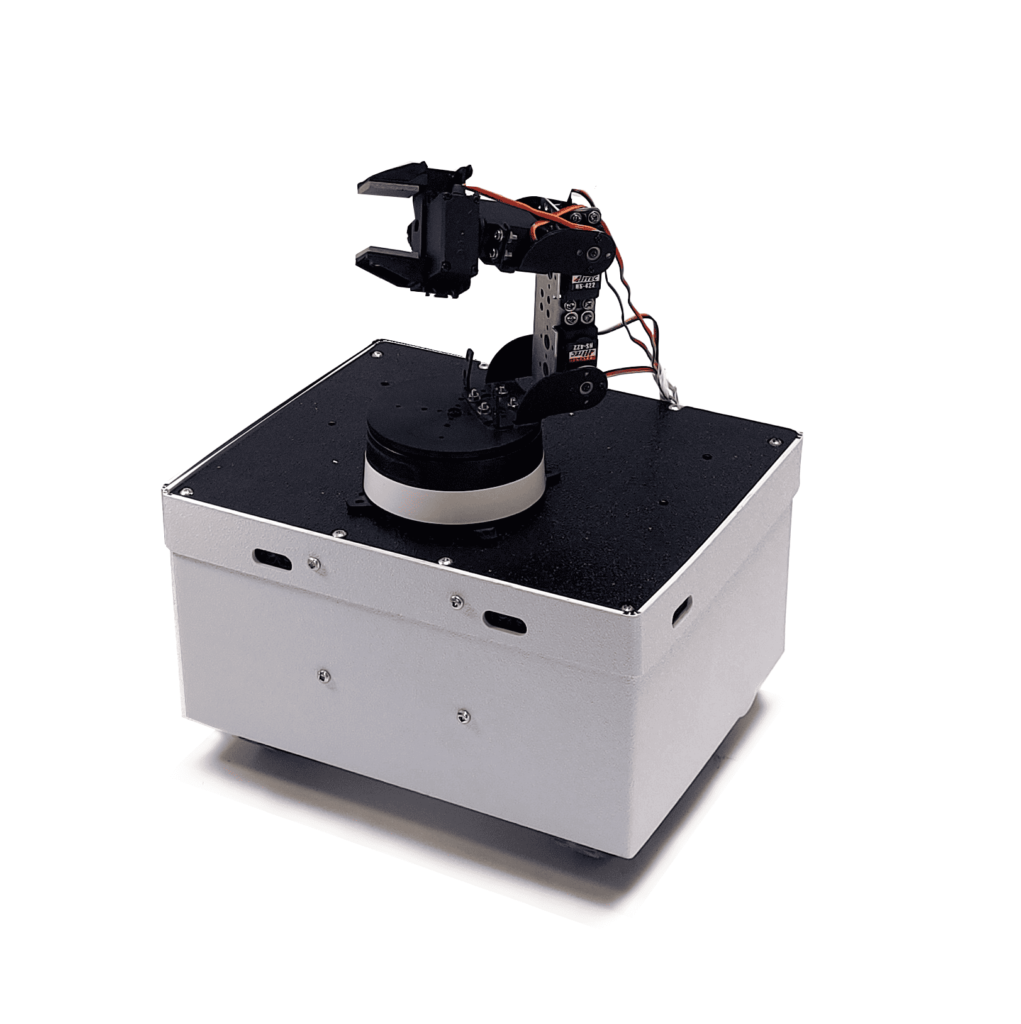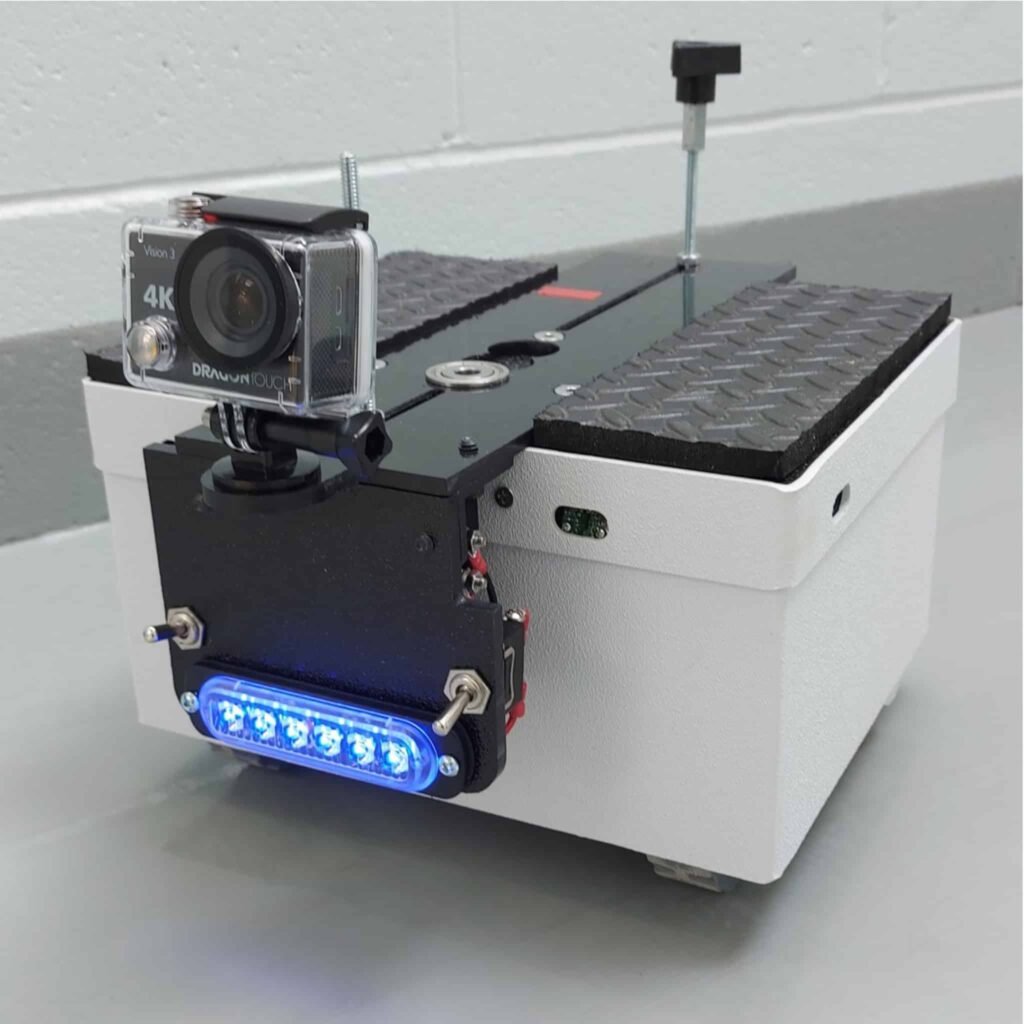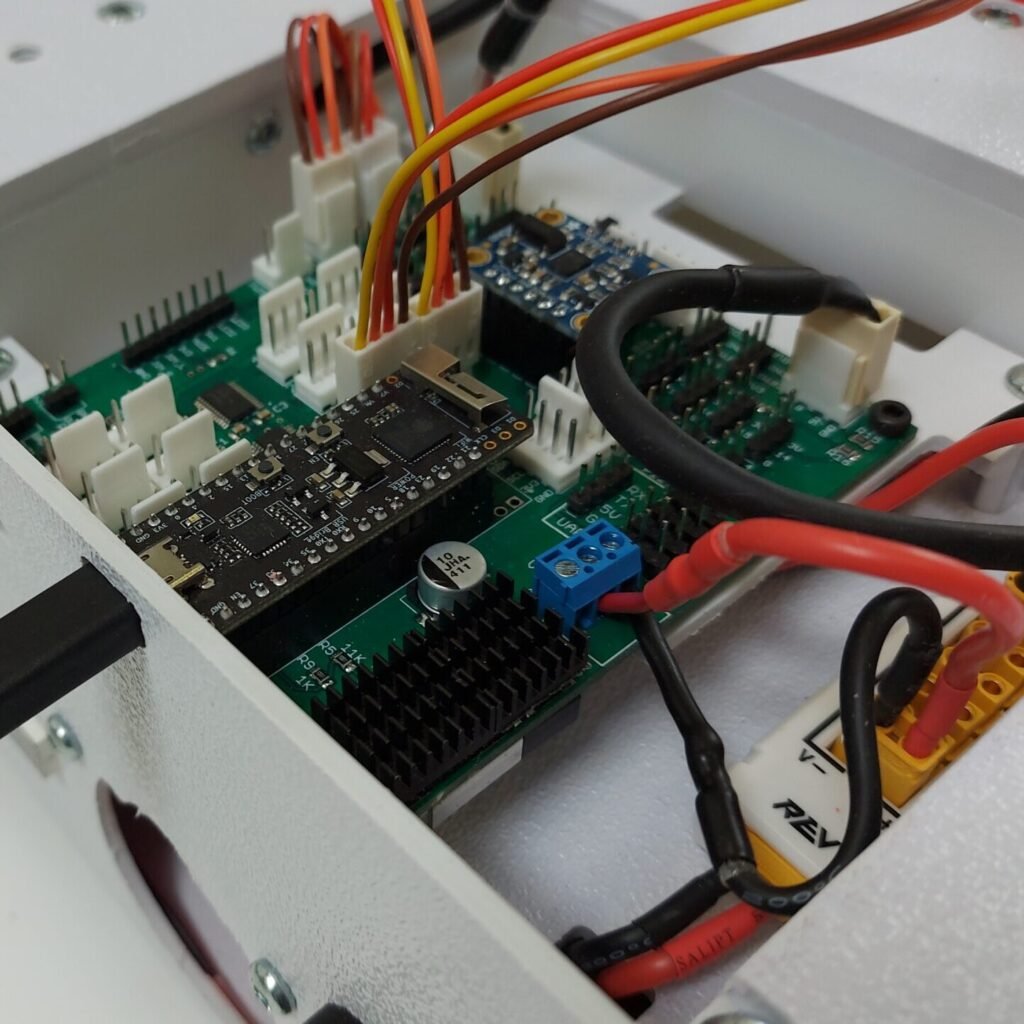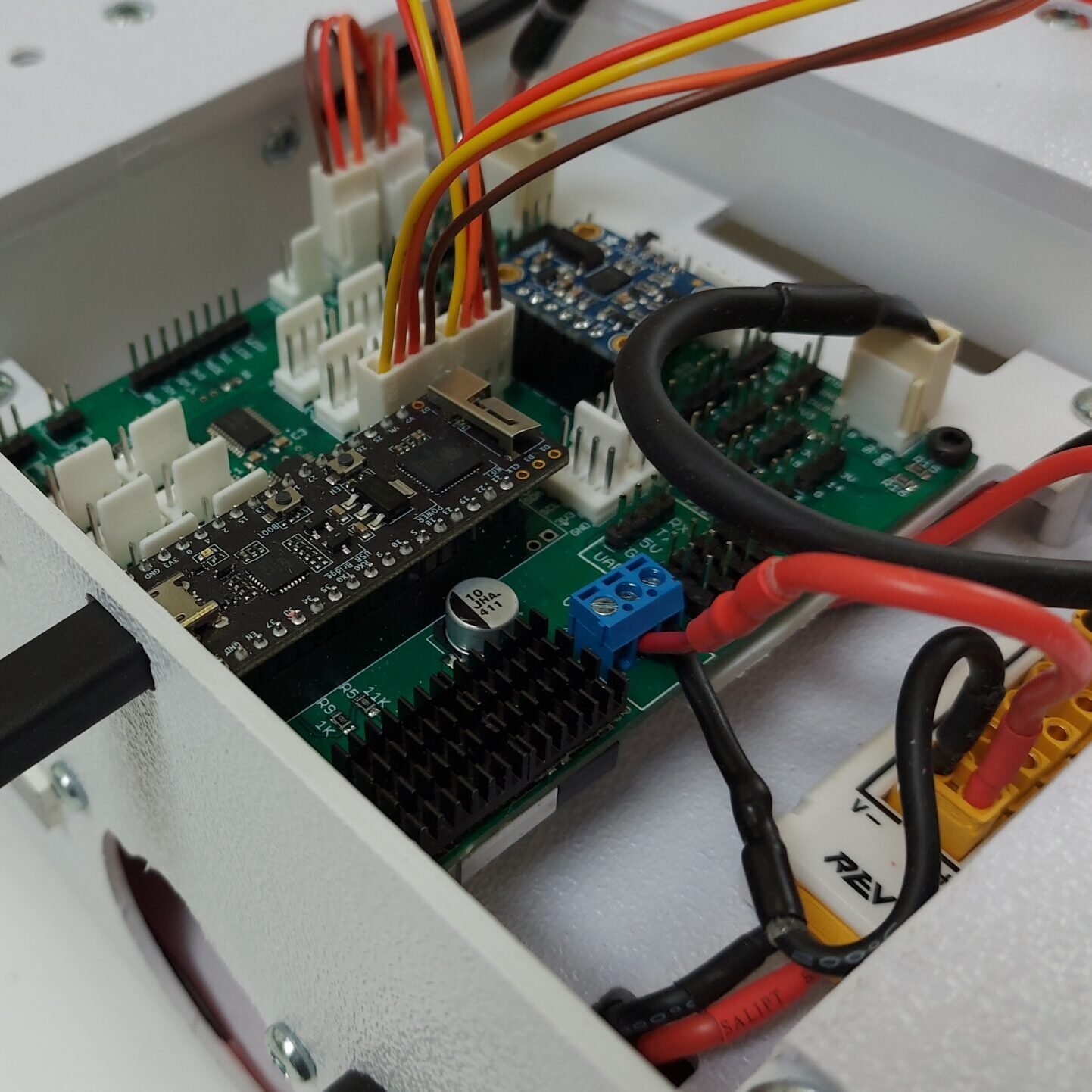



ROS-Compatible Research Platform
- Expandable QBii platform for robotics research and education
- Includes Raspberry Pi co-processor with camera
- Controllable with ROS2 or QRS Control App
- Supports add-on research payloads up to 20kg, e.g., sensors, arms, etc.
Description
QBii Plus an affordable mobile robot that can be expanded to support robotics research and education in colleges, universities, and industry.
QBii Plus expands upon on the capabilities of the standard QBii autonomous mobile platform by adding a Raspberry Pi co-processor and a machine vision camera. This co-processor gives the user the option of interacting with QBii Plus within a ROS2 network. Alternatively, you can operate the robot using the standard QRS Control App on a mobile tablet or smartphone, which supports several advanced capabilities such as Autonomous Mode, Teleoperation Mode, Waypoint Mapping, and Path Editing.
For small to medium size commercial operations (warehouses, fulfillment centers, retailers, manufacturers, greenhouses, etc.), QBii can help automate tasks such as carrying items weighing up to 50 lbs, towing utility carts (up to 200 lbs) with the Cart Hitch accessory, cleaning floors with the Broom Mount accessory, and inspecting surroundings with a Wi Fi enabled camera (not included).
QBii Plus is equipped with various digital interfaces (I2C ports, GPIOs, auxiliary PWM motor output, auxiliary encoder input, etc.). Together with eight (8) threaded holes on the robot’s sturdy top plate, these interfaces allow users to add their own custom payloads to QBii, e.g., sensors, manipulator arms, mechanisms, etc.
Share
Purchase
Applications

Expansion Capabilities
QBii Plus is equipped with various digital interfaces to enable expansion.

Custom Payloads
Use threaded holes on the robot's sturdy top plate to attach you own custom payloads.

ROS2 Compatible
A Raspberry Pi co-processor allows QBii Plus to operate within a ROS2 network
Specifications
| Dimensions | |
| Length: | 23.5 cm (9.25 in) |
| Width: | 28.6 cm (11.25 in) |
| Height: | 17.8 cm (7.0 in) |
| Ground Clearance: | 3.2 cm (1.25 in) |
| Wheel Diameter: | 8.3 cm (3.25 in) |
| Mass: | 5.5 kg (12 lb) |
| Speed and Performance | |
| Max Payload: | 20 kg |
| Max Linear Speed: | 1.0 m/s (ideal, no load) |
| Max Rotational Speed: | 1.5 rps / 540 degrees/s (ideal, no load) |
| Drive Motors: | 2 x 100W peak power |
| Power | |
| Battery: | 1x 12V (nominal) removable lithium ion battery, M12 form factor |
| Alternative: | Supports 1500 mAh and 3000 mAh M12 batteries (aka Milwaukee tool batteries) |
| Max Current: | 20A (fused) |
| Computer | |
| Main microcontroller: | ESP32 (dual core) |
| Co-processor: | Raspberry Pi 3 |
| Controller: | Android device running QRS Control App via Bluetooth Low Energy (BLE) |
| Alternative Controller: | ROS2 via WiFi (requires co-processor) |
| Sensors | |
| Encoders: | 2x 600 pulse encoders (2400 counts/rev) |
| IMU: | BNO055 (9 DOF with magnetometer) |
| Range: | 4x LiDAR Range Sensors (0.2m to 8.0m range) |
| Camera: | HD Camera for Raspberry Pi (requires co-processor) |
| Data & Power Ports | |
| USB: | 1 Micro USB port |
| I2C: | 14 (4 reserved for LiDAR sensors) |
| Expansion GPIOs: | 16 |
| Digital Inputs: | 4 |
| Digital Outputs: | 2 |
| Analog Inputs: | 2 |
| PWM Outputs: | 3 (2 reserved for drive motors) |
| A/B Encoder Inputs: | 3 (2 reserved) |
| Power Ports: | 4 x 12V auxiliary power outputs (XT30) |
